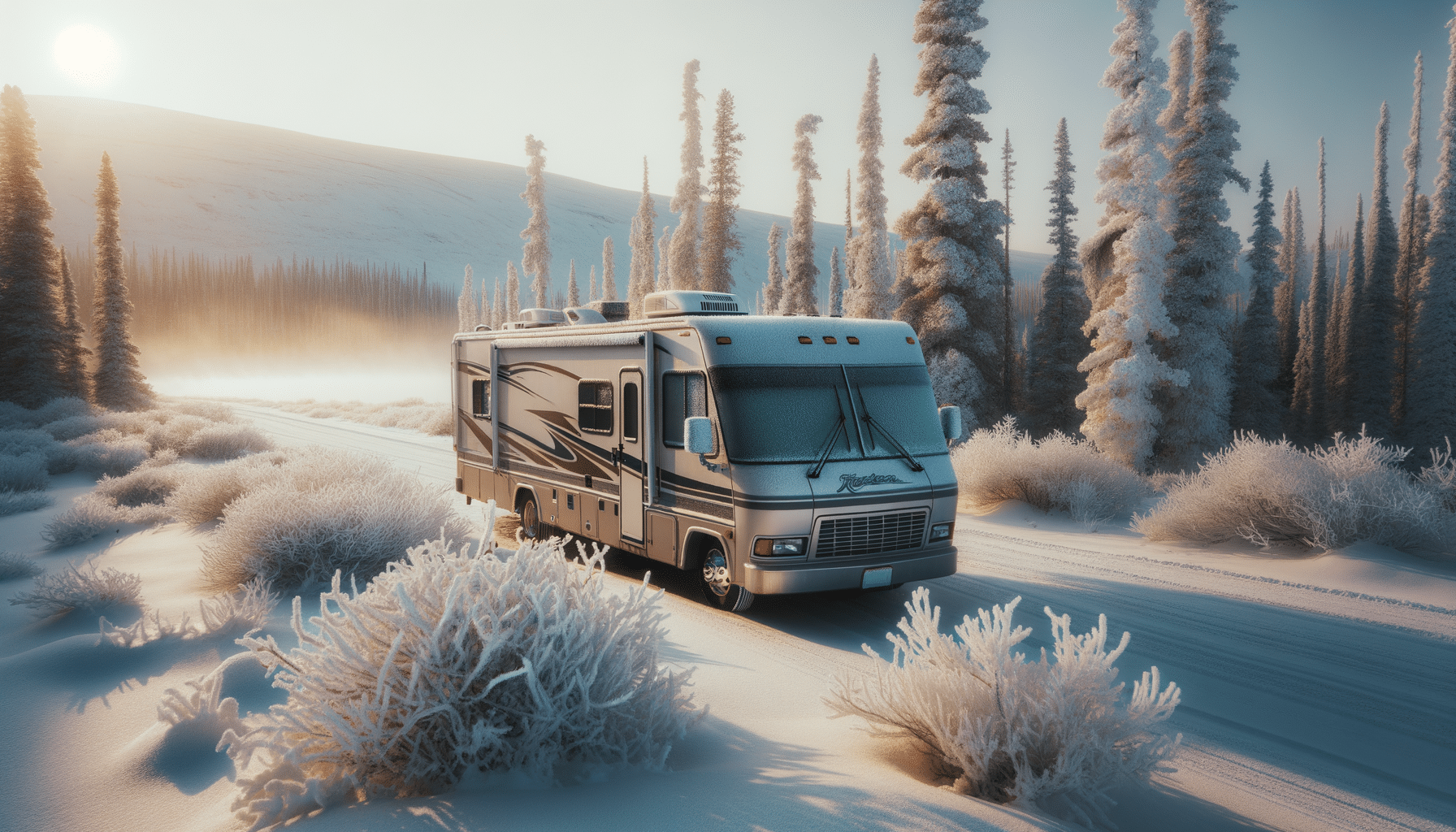
Before the Freeze: How to Winterize Your RV Step by Step
A Humorous and Informal Guide to Keeping Your RV from Turning into an Ice Sculpture
As the chill of winter approaches, RV owners face the daunting task of preparing their recreational vehicles to withstand the icy grip of the season. Imagine waking up one morning to find your beloved RV transformed into an ice sculpture, a frozen relic of its former glory. To prevent this frosty fate, it’s essential to winterize your RV effectively. But fear not, this guide will take you through the process with a touch of humor and a laid-back approach.
First things first, let’s talk about the plumbing system, which is often the first victim of freezing temperatures. Water left in the pipes can expand and cause them to burst, leading to costly repairs. To avoid this, you need to drain the water system completely. Start by emptying the freshwater tank, followed by opening all the faucets and letting the water run dry. Don’t forget the water heater! Once everything is drained, use an RV antifreeze to protect the pipes. Remember, this is not the same antifreeze you put in your car, so don’t mix them up!
Next, we move on to the exterior of the RV. Inspect the seals around windows and doors, as even the tiniest gap can let in cold air, turning your RV into a freezer. Use weather stripping or sealant to ensure these areas are tightly closed. Consider investing in an RV cover to protect the exterior from snow and ice accumulation. Not only will this help maintain the temperature inside, but it will also prevent wear and tear on the RV’s exterior.
By following these steps, you can transform the daunting task of winterizing your RV into a manageable and even enjoyable process. With a bit of humor and diligence, you’ll keep your RV snug and ready for the next season of adventure.
How Draining, Sealing, and Insulating Prevent Costly Winter Damage
Winterizing an RV is not just a precaution; it is a necessary step to prevent costly damage that can occur when temperatures drop. Draining, sealing, and insulating are three critical processes in this preventive measure, each playing a unique role in safeguarding your vehicle.
Draining the water systems is perhaps the most crucial step. When water freezes, it expands, and this can lead to pipes bursting. To prevent this, all water must be removed from the RV’s plumbing system. This includes draining the fresh water tank, water heater, and any holding tanks. Opening all faucets and flushing the system with RV antifreeze ensures that no residual water remains to freeze and cause damage.
Sealing is another important element. The integrity of your RV’s seals can determine how well it withstands the cold. Check all seals around windows, doors, and vents. Even the smallest crack can let in cold air and moisture, which can lead to mold and structural damage. Use high-quality sealants to repair any cracks or gaps, ensuring that your RV remains airtight and insulated from the cold.
Insulation is the final piece of the puzzle. If your RV is not well insulated, the cold can penetrate the walls and floors, making it difficult to maintain a comfortable interior temperature. Consider adding extra insulation to vulnerable areas, such as the undercarriage and the roof. This not only keeps the RV warm but also helps reduce energy costs associated with heating the vehicle during the winter months.
By effectively draining, sealing, and insulating your RV, you can protect it from the harsh winter conditions, thereby avoiding potential repair costs and extending the life of your vehicle.
Why Regular Maintenance Before Storage Extends Vehicle Life
Regular maintenance is the cornerstone of any vehicle’s longevity, and this is particularly true for RVs. Before storing your RV for the winter, conducting a thorough maintenance check can significantly extend its life and ensure it is ready for use when the warmer months return.
One of the key components of pre-storage maintenance is checking the engine and battery. Ensure that the battery is fully charged and disconnect it to prevent it from draining over the winter. It’s also wise to clean the battery terminals and apply a corrosion inhibitor. For the engine, changing the oil and replacing filters can prevent engine wear and tear during the months of inactivity.
Tire care is another critical aspect. Inflate the tires to the recommended pressure to prevent flat spots from forming during storage. If possible, consider using tire covers to protect them from the elements. Inspect the tires for any signs of wear or damage, and address these issues before storing the RV.
Additionally, check the RV’s exterior for any damage or areas that may need attention. Cleaning the RV thoroughly and applying a protective wax can shield it from harsh winter conditions, reducing the risk of rust and corrosion. Inside, clean and empty all food storage areas to prevent pests from settling in.
By performing regular maintenance before storing your RV, you not only extend its lifespan but also ensure that it remains in top condition, ready to hit the road when the travel season begins anew.
The Role of Proper Storage in Protecting Your RV
Proper storage is crucial when it comes to protecting your RV throughout the winter months. The way you store your vehicle can have a significant impact on its condition and performance once the cold season is over. Let’s explore the best practices for storing your RV to ensure it stays in optimal shape.
First, consider where you will store your RV. Indoor storage facilities provide the best protection from the elements, but they can be costly. If indoor storage is not an option, choose a covered outdoor space to offer some protection from snow and ice. Using an RV cover is a cost-effective alternative that can shield your vehicle from the harsh weather, preventing damage to the exterior.
Ventilation is another important factor. Before sealing your RV for the winter, ensure it is well-ventilated to prevent mold and mildew buildup. Use moisture absorbers inside the RV to control humidity levels and keep the interior dry. Leave cabinet doors open to allow air circulation and prevent musty odors.
Security is an often-overlooked aspect of RV storage. Make sure your RV is securely locked and consider investing in an alarm system or GPS tracker for added security. This not only protects your RV from potential theft but also gives you peace of mind during the winter months.
Finally, check on your RV periodically throughout the winter. Regular inspections can help identify any issues early on, allowing you to address them before they become major problems. By following these storage tips, you can protect your RV from winter’s worst and ensure it is ready for your next adventure.
Summary: Ensuring Your RV is Winter-Ready
Winterizing your RV is an essential process that involves careful planning and attention to detail. By following the steps outlined in this guide, you can protect your RV from the harsh winter conditions and avoid costly repairs. Draining the water systems, sealing and insulating vulnerable areas, performing regular maintenance, and ensuring proper storage are all critical components of this process.
Remember, each step plays an important role in safeguarding your vehicle. Proper winterization not only extends the life of your RV but also ensures that it remains in peak condition, ready for your next journey. As you prepare your RV for winter, keep in mind the humorous and informal approach we discussed. After all, a little laughter can make even the most daunting tasks more enjoyable.
With the right preparation, your RV will emerge from winter unscathed and ready to hit the road once again. So, embrace the process and take pride in knowing that your RV is well-protected against the winter chill.


